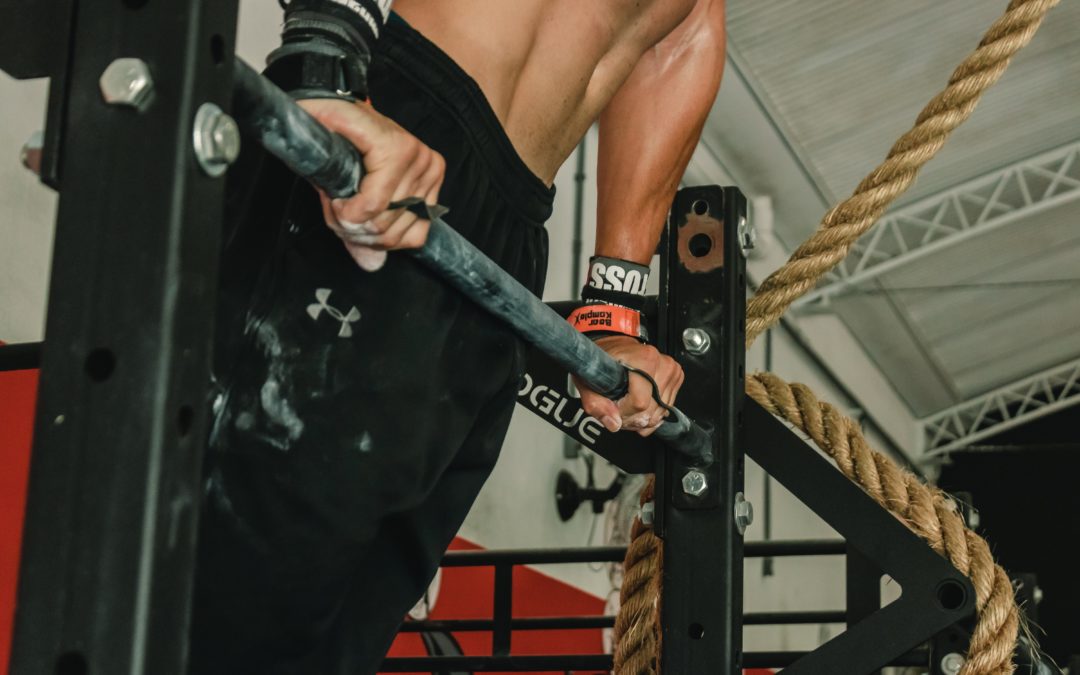If you have spent any time on the barbell, swinging KBs around, or doing pull-ups or toes-to-bar, you have probably experienced a blister or a rip. (If you’re still a rip virgin, chances are you won’t be for long, so you, too, can listen up).
It generally starts with an uncomfortable feeling somewhere on your hand or finger as you feel your skin shift and loosen up. Generally, it’s enough to signal you to hop off the bar and tape up, or stop the movement altogether for the day.
However, sometimes it’s too late. The skin has already ripped off, or a water or blood blister, has already formed.
What do you do next?
Should you pop the blister? Should you cut any dangling skin? Keep it moist? Dry it out? Let’s address these one by one.
POP IT OR LEAVE IT BE?
The old-school gymnastics coach advice is to grab a needle and thread and poke a hole on one side of your blister, and then string the thread through and out the other side of the blister. Gymnasts far and wide have been known to go to bed with thread hanging out on both sides of their blister.
What this does is help dry the rip out—via the small air hole made from the needle—all the while keeping the skin covering and protecting the rip. Sounds kind of gross but it does work and some people like this method. It is certainly better than popping the blood blister and force ripping the skin off, leaving your hand stingy and vulnerable for the next 24 hours.
However, if you’re going to avoid any hand movements for a couple days, then it’s often best just to leave the blister be. That skin will rip off at some point, but if it has a couple days to sit and heal, by the time the skin rips off, it will be a lot dryer and much less painful than a newly-formed open rip in the middle of your hand.
LEAVE THE DANGLY BITS?
If you have ripped, but the skin is still sitting nice and flat over the rip, then it’s probably best to leave the skin as is. But if the skin is dangling, and especially if you’re planning on continuing to work with your hands that day or the following day, then definitely grab some scissors and cut off the loose skin. If you don’t, the skin is likely to keep pulling back further and further, making your rip longer and deeper and more painful.
When you do cut the skin off, it’s best to grab some fine grain sandpaper or a pumice stone and gently smooth the callus out around the edge of the rip. Again, this will prevent the skin from pulling back further and aggravating the rip even more.
MOIST OR DRY?
The million dollar question!
You want to aim for not too moist, not too dry, but just right.
If you keep lathering polysporin on your rips, or Aloe, or some other product, sometimes it can backfire and slow healing because it keeps the wound too moist, which makes it even more tender. However, if you don’t do anything and let it dry out, then sometimes it gets so dry it cracks and forms an even deeper, more painful rip.
The best approach is to put some sort of disinfecting ointment on the right away and cover it up with a band-aid, but then pull the band-aid off and let your hands air out when you sleep. You’ll find they’ll feel significantly better in the morning when they’re not kept covered and moist overnight. If the rip looks too dry in the morning, put some more product on it. If not, leave it be.
Here are some options for what to put on your rips to speed healing and stop them from getting too dry:
- Polysporin or Neosporin
- Vasoline
- Aloe
- Ript Skin System’s QUICK FIX and DAILY DOSE (www.riptskinsystems.com): I love this product as it comes with the above two healing and prevention products, as well as a pumice stone called a GRINDSTONE. The best part is their QUICK FIX and DAILY DOSE come in a solid chapstick-like form, so there’s no chance of them bursting open in your bag like you may have experienced from others creams.
Though ripping your hands is sometimes inevitable, like with any ailment, prevention is the best medicine. And there are three steps that can be taken to avoid ripping in the first place:
- Keep calluses thin and pliable
One of the most common places for calluses to become thick and stiff is right at the base of your fingers where they meet your palm. It’s worth spending a few minutes each day checking out what your calluses are doing and filing them down to thin them out, again either with fine grain sandpaper or a pumice stone. Or Ript’s GRINDSTONE.
2. The Goldilocks Rule
Same goes for the moisture level of your skin. If your hands are super dry, it’s worth applying a moisturizer before going to bed. Dry skin can lead to cracks, which turn into rips.
3. Grips or Tape
If you’re going to be doing 100 pull-ups, it’s best to throw on some grips or tape your hands as a prevention measure.
Rogue makes some great ones. Check them out here: (https://www.roguefitness.com/lifting-straps-wraps/hand-protection).
Or you can go directly to the Bear Komplex website (https://www.bearkomplex.com/) to get some awesome grips for probably cheaper shipping compared to Rogue. Size up on these for a better fit.
Or you can get a roll of athletic tape and do it yourself, like this:
1. Cut two pieces of athletic tape about eight inches in length, and then split them in half lengthwise, so you now have four eight-inch strips.
2. Press one end of the piece on the inside of your wrist. Bring it up to your palm and wrap it around your middle finger, and then bring it back down and around to the base of your wrist and press it down to keep it in place.
3. Do the same with your index finger, and your pointer finger if need be (depending on the area you’re trying to protect). You can also do a second layer on each finger if you want a thicker tape job to provide even more padding.
4. Cut a final piece of athletic tape, also around 8 inches long, and wrap it around your wrist to cover up the end pieces so they don’t peel right off. Be careful and make sure you don’t wrap the tape so tight that you lose circulation!

